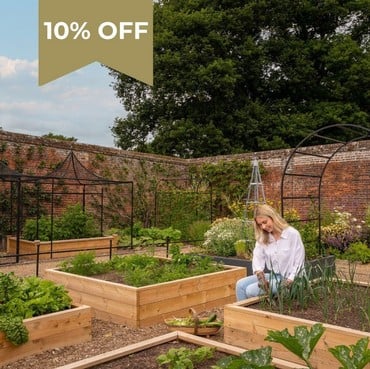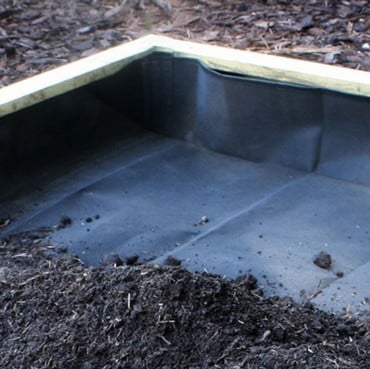Matthew Wilson - Raised Beds
My first experience with raised beds was also my first time growing veg, some twenty years ago. At the time I lived in Hertfordshire and the soil in my garden comprised a charming mixture of clay, lumps of sandstone, iron ore and more clay. In short, it was rubbish. I had a small front garden and decided that, somehow, I was going to make it viable for growing a few fresh crops. But how to get over the wretched, unyielding and impossible to cultivate soil?
The answer was to construct a series of raised beds, about 1.2m wide, 2.5m long and 20cm deep, which were then filled with a mixture of garden compost and top soil from a heap I had built out of old turfs. The result was that in pretty unpromising conditions I was able to grow a fairly good range of crops, including herbs, salads and so much beetroot that it followed me around for about six years – every time I moved house I would find a jar or two lurking in a cupboard.
Raised Beds at Harlow Carr
At Harlow Carr we specialised in raised beds, as our entire Kitchen Garden in comprised of them, including a range of bed systems from Harrod Horticultural. The reasons for using raised beds as an alternative to growing directly in the soil are compelling. From a soil management perspective, raised beds enable a no dig regime to be put in place, where the soil is ‘fed’ from above by applying mulch twice a year, spring and autumn. This enables the soil to maintain a healthy balance of soil micro-organisms that can be adversely affected by continuous digging – imagine a fork coming through your home every other day – and has the added benefit of holding in soil moisture and reducing weeds. And of course if your soil is poor, like mine all those years ago, it’s easy to manipulate it and bring in better growing media or making your own by mixing compost and soil. Raised beds also warm more readily in spring, as the sides are exposed to the sun and the growing medium lifted out of the cold earth beneath, which means you can get sowing or planting out a little earlier than otherwise.
The size of raised beds tends to lead to a more manageable approach to growing too; smaller areas tend to lead to a more realistic crop yield – my beetroot mountain aside. Finally it’s much easier to control pests with raised bed systems, especially those from the Harrod range that can accommodate crop protection hoops, which enable insect mesh netting to be put in place – perfect for keeping cabbage white butterflies at bay. We grow lots of companion plants in our Kitchen Garden, including plenty of flowers, so the result is delicious to look at and to eat!
Perhaps best of all though is that even a really small garden can usually accommodate a raised bed, or maybe two, bringing the fun of growing veg to those of us who haven’t the time to take on an allotment, or are in an area where they are in short supply. In doing so not only are you experiencing the fun, and delicious fresh taste, of growing your own you’re also doing your bit to help save the planet, as a lot of shop bought vegetables are imported from around the world and come with a huge carbon footprint attached. Raised beds are really easy to build, and simple to grow with, so even if you have never grown vegetable before, maybe now is the time?





























